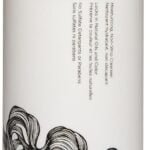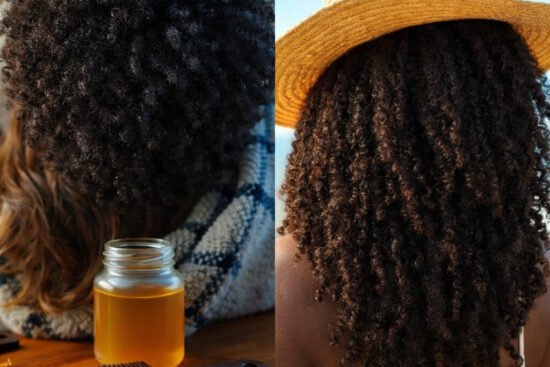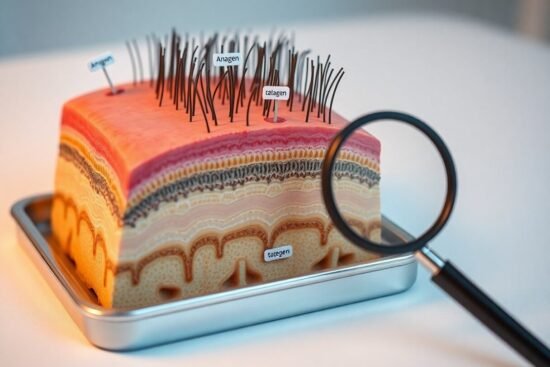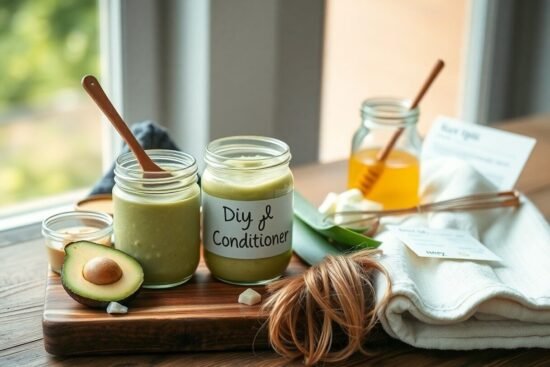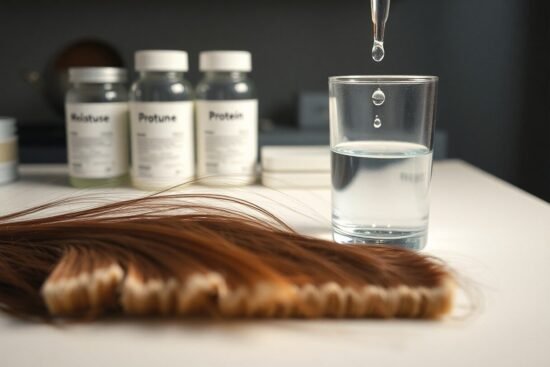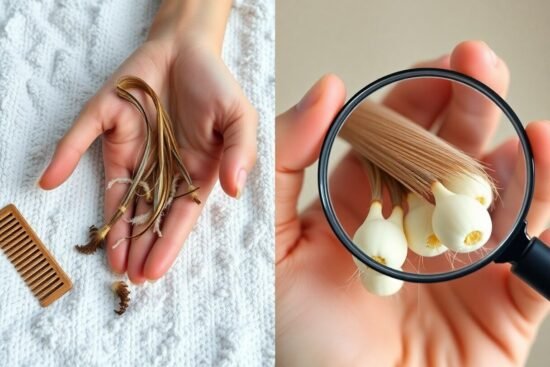
You might not realize it, but deep conditioning is vital for maintaining your hair’s health. It’s no secret that factors like heat styling, environmental stress, and chemical treatments can leave your hair feeling dry and brittle. In this post, I’ll share how often you should incorporate deep conditioning into your routine to ensure your locks stay hydrated, shiny, and resilient. By understanding the benefits, you can make informed decisions that keep your hair looking its best.
Key Takeaways:
- Deep conditioning helps restore moisture and nourishment to dry, damaged hair.
- Frequency of deep conditioning depends on individual hair type and condition, typically ranging from once a week to every month.
- Over-conditioning can lead to product build-up, so finding a balance is important.
- Look for products with beneficial ingredients like natural oils, proteins, and vitamins for effective deep conditioning.
- Consider incorporating deep conditioning treatments after chemical processes or heat styling for added protection.
- Assess and adjust your deep conditioning routine based on seasonal changes or hair health fluctuations.
- Regular deep conditioning contributes to improved hair elasticity, softness, and overall appearance.
The Science Behind Hair Health
Understanding hair health involves delving into its structural composition and the factors that influence its vitality. Hair consists primarily of a protein called keratin, which forms a protective outer layer known as the cuticle. Maintaining the integrity of this structure is crucial to prevent issues like breakage and frizz. Routine care should emphasize not only moisture replenishment through deep conditioning but also the balance between moisture and protein. Achieving this harmony is what ultimately leads to stronger, shinier, and healthier hair.
What Happens to Hair Without Deep Conditioning
Hair without deep conditioning becomes vulnerable to damage and deterioration. When deprived of moisture, strands can become dry, brittle, and more susceptible to breakage. This lack of hydration can lead to visible split ends and a dull appearance, while the internal structure weakens, ultimately resulting in hair that lacks vitality and bounce. Without regular deep conditioning, I’ve found that even the healthiest hair can begin to look lifeless and unmanageable over time.
The Role of Moisture and Protein in Hair Care
Moisture and protein play integral roles in hair care, affecting elasticity, strength, and overall health. Moisture maintains hydration levels in the hair shaft, preventing dryness and brittleness, while protein provides structural support. An imbalance, such as too much moisture without adequate protein, can weaken the hair, making it prone to damage. Similarly, an excess of protein can lead to stiffness if moisture levels are not sufficient. Finding that perfect balance is key to vibrant hair.
For instance, I often recommend a routine where you alternate between moisturizing and protein-rich treatments, particularly if you regularly style your hair or expose it to environmental stressors. Moisture helps in expanding the hair shaft, making it pliable, while protein helps to fortify the fiber. Incorporating ingredients like hydrolyzed keratin or amino acids into your deep conditioners can effectively restore this balance, ensuring each strand is well-nourished and resilient against damage.

Signs Your Hair Needs a Deep Conditioning Treatment
Recognizing when your hair is in desperate need of a deep conditioning treatment is vital for maintaining its health. If you notice that your hair feels brittle, lacks shine, or breaks easily, these are strong indicators that it’s time to incorporate some moisture back into your strands. You might also find your locks tangling more easily or appearing dull, both signs urging a nourishing remedy.
Common Indicators of Damage and Dryness
Several signs point to the need for deep conditioning, such as frizz, split ends, and lackluster appearance. When your hair feels coarse to the touch or exhibits excessive static, it’s likely suffering from dryness. Increasing breakage or difficulty in achieving a smooth style can further underscore that your hair is in dire need of hydration and care.
How to Assess Your Hair Type and Its Needs
Understanding your hair type is imperative for tailoring the right deep conditioning approach. Various hair types—be it straight, wavy, curly, or coily—have differing moisture requirements. Consider factors like porosity, density, and texture. For instance, high-porosity hair tends to absorb moisture quickly but loses it just as fast, needing more frequent treatments.
To assess your hair type, start by examining its texture—gently pull strands to see if they break, which can indicate chemical damage. Next, perform a simple water test: place a strand of hair in a glass of water. If it sinks quickly, you likely have high porosity hair needing intensive moisture. Low porosity hair floats for a while, suggesting that your strands require lighter, penetrating conditioners. By understanding these nuances, I can tailor my deep conditioning routine effectively for optimal results.
Finding the Right Deep Conditioner for Your Hair
Choosing the right deep conditioner is crucial for addressing your hair’s unique needs. Start by assessing your hair type and any specific concerns like dryness, color treatment, or heat damage. Testing different products can help you discover which formulas provide the hydration and repair you seek. Additionally, reading reviews and considering professional recommendations can guide your decision-making process towards a conditioner that aligns with your hair goals.
Key Ingredients to Look For
Focusing on active ingredients will elevate your deep conditioning game. Look for items infused with keratin for strengthening, argan oil for moisture, and aloe vera for soothing properties. These components are integral to effective care, addressing both the surface and the inner layers of your hair. Consider that a product enriched with natural oils can significantly improve the overall health of your strands.
| Ingredient | Benefit |
| Keratin | Strengthens and restores elasticity |
| Argan Oil | Provides intense moisture and shine |
| Aloe Vera | Soothes and promotes scalp health |
| Shea Butter | Locks in hydration |
| Panthenol | Improves elasticity and texture |
Matching Conditioner Types to Hair Goals
Matching your conditioner type to specific hair goals enhances results. For example, if your aim is moisture, opt for a hydrating deep conditioner with rich oils. Alternatively, for recovery from color damage, a repairing formula with protein-based ingredients is ideal. Ensure you tailor your choice based on how often you expose your hair to heat or chemical treatments. This tailored approach will yield noticeable improvements in your hair quality, texture, and appearance.
| Hair Goal | Recommended Conditioner Type |
| Moisture | Hydrating Deep Conditioner |
| Strength | Protein Treatment |
| Repair Color Damage | Repairing Formula |
| Smoothing | Smoothing Deep Conditioner |
| Detangling | Moisturizing Detangler |
- Hydrating deep conditioner is crucial for adding moisture.
- Protein treatment builds strength against breakage.
- Repairing formula works wonders for color-treated hair.
- Smoothing deep conditioner reduces frizz and increases shine.
- Moisturizing detangler helps with easy combing and reduces heat damage. Thou, this selection process can feel overwhelming, but attention to detail will lead to the best results.
Frequency Matters: How Often Should You Deep Condition?
Determining how often to deep condition your hair can significantly impact its overall health and appearance. Generally, deep conditioning treatments should be integrated into your hair care routine at least once a week. However, for those with particularly dry or damaged hair, two to three times a week may be necessary. Assessing your hair type and condition is key to finding the right frequency that works for you.
General Recommendations Based on Hair Type
Your hair type plays a pivotal role in how often you should deep condition. For instance, curly and coily hair typically needs moisture and can benefit from deep conditioning once a week, while fine or straight hair may only require conditioning every two weeks to avoid weigh-down. Tailoring your routine based on hair type will yield the best results.
Adjusting Frequency for Seasonal Changes and Treatment Needs
Seasonal changes and specific treatment needs may impact your deep conditioning schedule. During colder months, hair can turn dry and brittle, calling for more frequent deep conditioning to maintain moisture and shine. Conversely, summer heat can lead to excess oil and product buildup, so you might only need to condition once a week. Additionally, if you’ve recently colored or chemically treated your hair, increasing deep conditioning sessions will help restore and maintain its health.
As an example, let’s consider the transition from winter to summer. During winter, I often increase deep conditioning to every 4-5 days to combat dryness and static. As temperatures rise, I adjust back to once a week, factoring in the oiliness from sweat and humidity. Your personalized deep conditioning treatment frequency should always consider external factors like climate, the health of your hair, and any styling methods you’ve used, ensuring it remains vibrant and strong year-round.
Techniques for Effective Deep Conditioning
Maximizing the benefits of deep conditioning requires specific techniques that enhance absorption and effectiveness. I recommend pre-treating your hair by detangling and sectioning it before applying the product. This approach ensures even distribution, allowing the conditioner to penetrate deeply. Additionally, using a plastic cap or shower cap can create a warm environment that accelerates the conditioning process, making your hair absorb more moisture and nutrients. For heat application, you might consider using a heated cap or towel, which can significantly amplify results.
Application Methods to Maximize Benefits
Choosing the right application method is vital for achieving optimal results. I typically apply deep conditioner liberally to damp hair, focusing on the mid-lengths and ends where damage often occurs. Working in small sections can also help ensure each strand is covered. Massaging the product into my scalp can stimulate blood flow and enhance the overall health of my hair.
Combining Deep Conditioning with Other Hair Care Routines
Integrating deep conditioning into your regular hair care routine can provide numerous advantages. Pairing it with weekly cleansing rituals allows your hair to start fresh, making it more receptive to important nutrients. Additionally, I like to apply it before styling with heat tools, ensuring my hair is well-hydrated and protected from damage.
Combining deep conditioning with other hair care routines can boost your hair’s health. You could incorporate deep conditioning sessions post-shampooing or align them with your usual color treatments or chemical processes. This synergy maximizes conditioning benefits while mitigating damage from styling practices. On days when I apply heat styling, I always use deep conditioner first to establish a protective barrier, significantly reducing breakage and dryness. By systematically planning your hair regimen, you’ll notice pronounced improvements in both texture and shine.
Conclusion
Following this, I find that deep conditioning your hair is important for maintaining its health and vitality. Depending on your hair type and condition, I recommend incorporating deep conditioning treatments into your routine every 1-2 weeks. This practice not only adds moisture but also strengthens your strands and improves overall manageability. By staying consistent, you ensure that your hair remains resilient against damage and environmental stressors, allowing you to enjoy beautiful, nourished hair.
FAQ
Q: What is deep conditioning and why is it important for hair health?
A: Deep conditioning is a hair treatment designed to restore moisture, elasticity, and shine to the hair. It penetrates deeper than regular conditioners, providing intense nourishment to dry, damaged, or color-treated hair. Regular use can help repair split ends, reduce breakage, and enhance overall hair vitality.
Q: How often should I deep condition my hair?
A: The frequency of deep conditioning varies based on hair type and condition. Generally, it’s recommended to deep condition once a week for healthy hair. If your hair is particularly dry, damaged, or chemically treated, you might benefit from deep conditioning every 3-5 days. Conversely, those with oilier hair can consider bi-weekly treatments.
Q: Can deep conditioning help with frizz and flyaways?
A: Yes, deep conditioning can significantly reduce frizz and flyaways. By providing imperative moisture and nutrients, deep conditioners help smooth the hair cuticle and enhance manageability. Users can experience a noticeable reduction in frizz, making hair appear sleeker and healthier.
Q: What ingredients should I look for in a deep conditioner?
A: Look for deep conditioners that contain hydrating ingredients such as shea butter, coconut oil, argan oil, or aloe vera. Proteins like keratin or silk can help strengthen the hair, while humectants like glycerin draw moisture into the hair shaft. Tailoring your choice to your hair’s specific needs will yield the best results.
Q: Is it possible to overdo deep conditioning?
A: While deep conditioning is beneficial, overdoing it can lead to product buildup, making hair feel weighed down and greasy. Additionally, excessive protein treatments can make hair brittle. It’s imperative to find a balance that works for your hair’s needs and adjust frequency based on how your hair reacts.
Q: Can I deep condition my hair overnight, and is it effective?
A: Yes, deep conditioning overnight can enhance the treatment’s effectiveness, particularly for very dry or damaged hair. Just ensure to use a lightweight formula to avoid excessive heaviness. Consider wearing a shower cap to minimize mess and help retain heat, which can boost absorption.
Q: Are there different techniques for applying deep conditioner for best results?
A: Indeed, applying deep conditioner properly can enhance its effectiveness. Start with clean, damp hair, and distribute the product evenly, focusing on the ends. Use a wide-tooth comb to help detangle and ensure even coverage. For added benefit, consider using heat, such as a warm towel or hooded dryer, to help the product penetrate deeper into the hair shaft.

